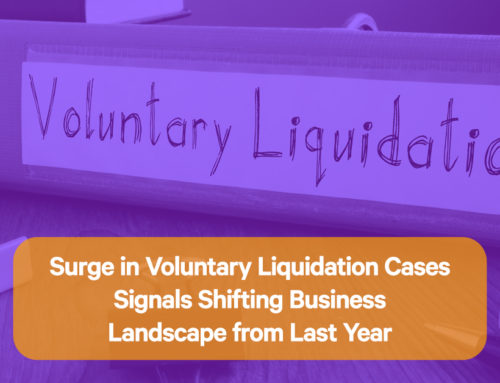With much economic volatility, many UK small and medium-sized enterprises (SMEs) find themselves at a critical crossroads, facing the daunting prospect of liquidation. These businesses, often the lifeblood of local economies, are now struggling with unprecedented challenges, navigating through uncertain terrain and striving to stay afloat in turbulent waters.
The repercussions of the global pandemic have been particularly severe, increasing existing pressures and adding to financial vulnerabilities for countless SMEs nationwide. With lockdowns, supply chain disruptions, and shifts in consumer behaviour, SMEs are confronting a perfect storm of challenges, testing their resilience and adaptability like never before.
The Changing Landscape of SMEs: A Perfect Storm
The landscape for SMEs has dramatically shifted in recent years, with many factors contributing to their precarious position. From the global pandemic’s disruptive force to shifting consumer behaviours and market dynamics, SMEs face an uphill battle to maintain feasibility and sustainability.
The harsh reality is that, for some, the journey may end in SME liquidation, a distressing but sometimes necessary step in the lifecycle of a business. Navigating these challenges demands strategic foresight, adaptability, and a willingness to explore innovative solutions in the midst of uncertainty.
Understanding the Pressures: Financial, Operational, and Market
At the heart of this issue lies a complex mix of financial pressures, operational constraints, and market uncertainties. SMEs, by their very nature, often lack the resources and resilience of larger corporations, making them particularly vulnerable to economic shocks and external disruptions.
With limited access to capital, constrained cash flow, and mounting debts, many SMEs find themselves on the edge, struggling with the harsh reality of insolvency and the prospect of liquidation. This vulnerability is made worse by the dependencies within SME ecosystems, where the failure of one business can have ripple effects across suppliers, partners, and local communities, adding to the economic strain and magnifying the urgency for effective solutions.
As SMEs navigate these challenges, encouraging collaboration, innovation, and strategic partnerships can provide a lifeline, helping businesses to pool resources, share expertise, and collectively weather the storm of uncertainty.
The Decision Point: Exploring Alternatives and Facing Reality
The decision to pursue SME liquidation is never taken lightly. It represents the culmination of exhaustive efforts to explore alternative solutions, including restructuring, debt refinancing, and turnaround strategies.
However, when all avenues have been exhausted, liquidation may offer the most viable path forward, enabling stakeholders to reduce losses, maximise asset recovery, and facilitate an orderly wind-down of operations. Despite its severe implications, liquidation can serve as a strategic pivot point, allowing businesses to reallocate resources, reassess priorities, and lay the groundwork for future growth and sustainability.
Seeking Guidance: The Role of Professional Insolvency Practitioners
For SMEs teetering on the brink of liquidation, seeking professional guidance and support is key. A reputable and leading insolvency practice can provide invaluable expertise, guiding SMEs through the complexities of the liquidation process and helping them navigate the legal, financial, and regulatory requirements with confidence and clarity.
With the guidance of experienced professionals, SMEs can gain a comprehensive understanding of their options, make informed decisions, and lower risks associated with the liquidation process. This support can remove the burden on SMEs’ internal resources, allowing them to focus on managing their operations and reducing the impact on stakeholders.
Embracing Support: Overcoming Stigma and Recognising Strength
Crucially, SMEs must recognise that seeking assistance is not a sign of weakness but rather a proactive step towards securing the best possible outcome for all stakeholders involved. By engaging with experienced professionals who understand the SME liquidation process, businesses can access tailored solutions, strategic advice, and practical support to navigate through challenging times and come out stronger on the other side.
Embracing this support demonstrates resilience and a commitment to responsible stewardship, allowing SMEs to uphold their obligations while laying the foundation for future success. It’s a testament to proactive management and a commitment to safeguarding the interests of all stakeholders, making sure the transition through the liquidation process is smooth.
Managing the Process: Transparency, Communication, and Collaboration
In the face of uncertainty, SMEs must prioritise transparency, communication, and collaboration to effectively manage the liquidation process and safeguard the interests of creditors, employees, and shareholders. Open dialogue and constructive engagement are important to encourage trust, mitigate conflicts, and facilitate a smooth transition towards closure.
Through transparent communication channels, SMEs can keep stakeholders informed, address concerns promptly, and maintain credibility throughout the liquidation process. This proactive approach builds goodwill, strengthens cooperation, and minimises disruptions, ultimately contributing to a more orderly and successful resolution.
Looking Ahead: Building Resilience and Planning for the Future
Looking ahead, SMES must adopt a proactive and forward-thinking approach to risk management and contingency planning. By embracing resilience, adaptability, and innovation, SMEs can better position themselves to weather future storms and thrive in an ever-evolving business landscape.
This proactive stance involves continuously evaluating market dynamics, identifying potential threats, and implementing agile strategies to reduce risks and capitalise on emerging opportunities. By encouraging a culture of innovation and flexibility, SMEs can not only navigate through uncertainty but also position themselves as leaders in their respective industries, driving sustainable growth and long-term success.
Facing Challenges, Embracing Opportunities
There are challenges facing UK SMEs, but they’re not impossible to overcome. While SME liquidation may represent the end of one chapter, it also presents an opportunity for new beginnings and fresh perspectives.
By leveraging the expertise and support of reputable insolvency practitioners, SMEs can navigate through turbulent waters with confidence and resilience, paving the way for a brighter and more sustainable future.
Through strategic planning, proactive decision-making, and a commitment to continuous improvement, SMEs can emerge from the liquidation process stronger and more resilient than before, ready to seize opportunities and chart a course towards long-term success in the evolving business landscape.
Get Help from an Expert
Call us on 0800 246 1845 or email us at mail@leading.uk.com to explore how we can help you through the SME liquidation process. Our team of experienced professionals is here to provide personalised help, strategic insights, and practical solutions to guide you through these challenging times with confidence and clarity. Don’t face liquidation alone; reach out to us today and take the first step towards securing a brighter future for your business.






